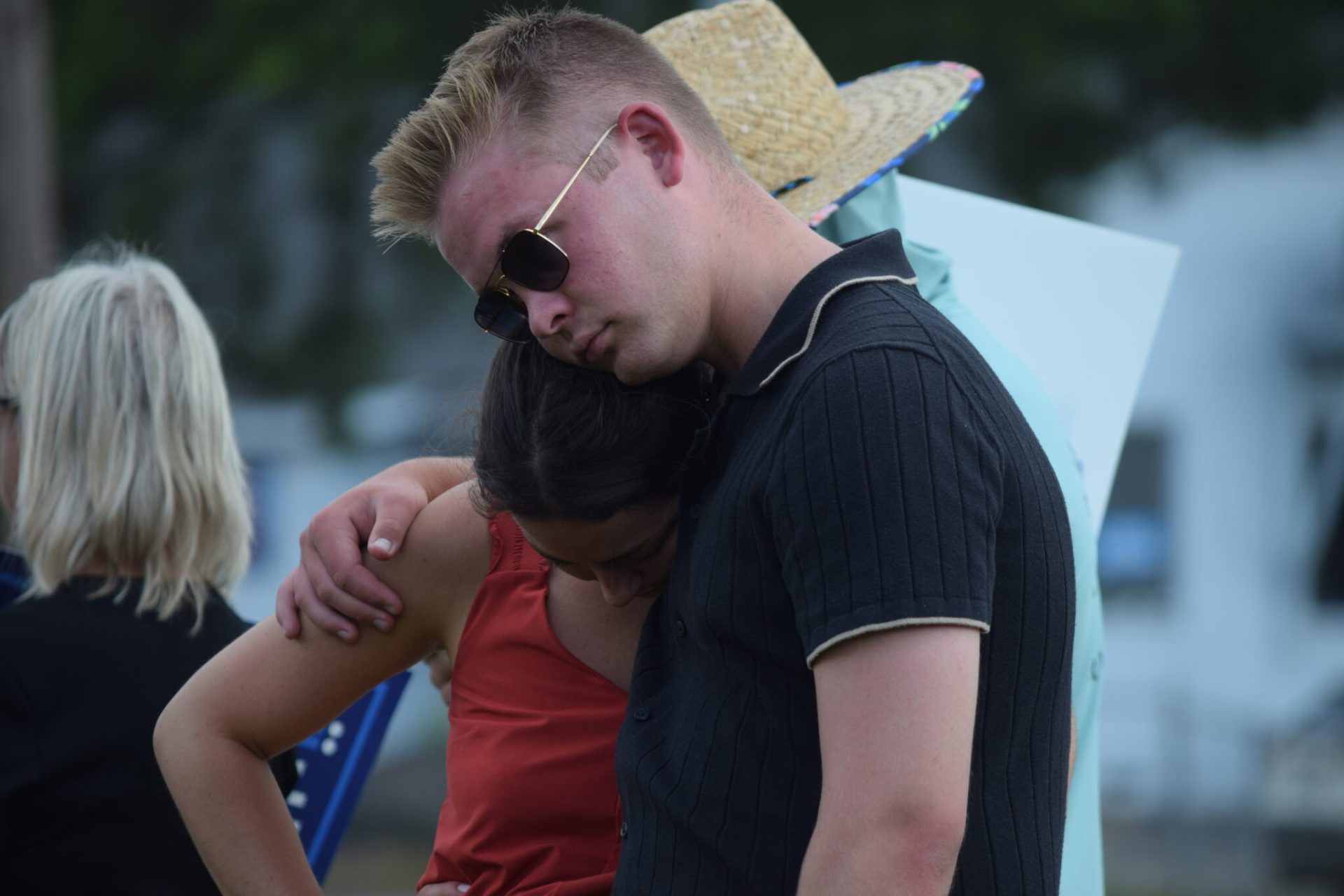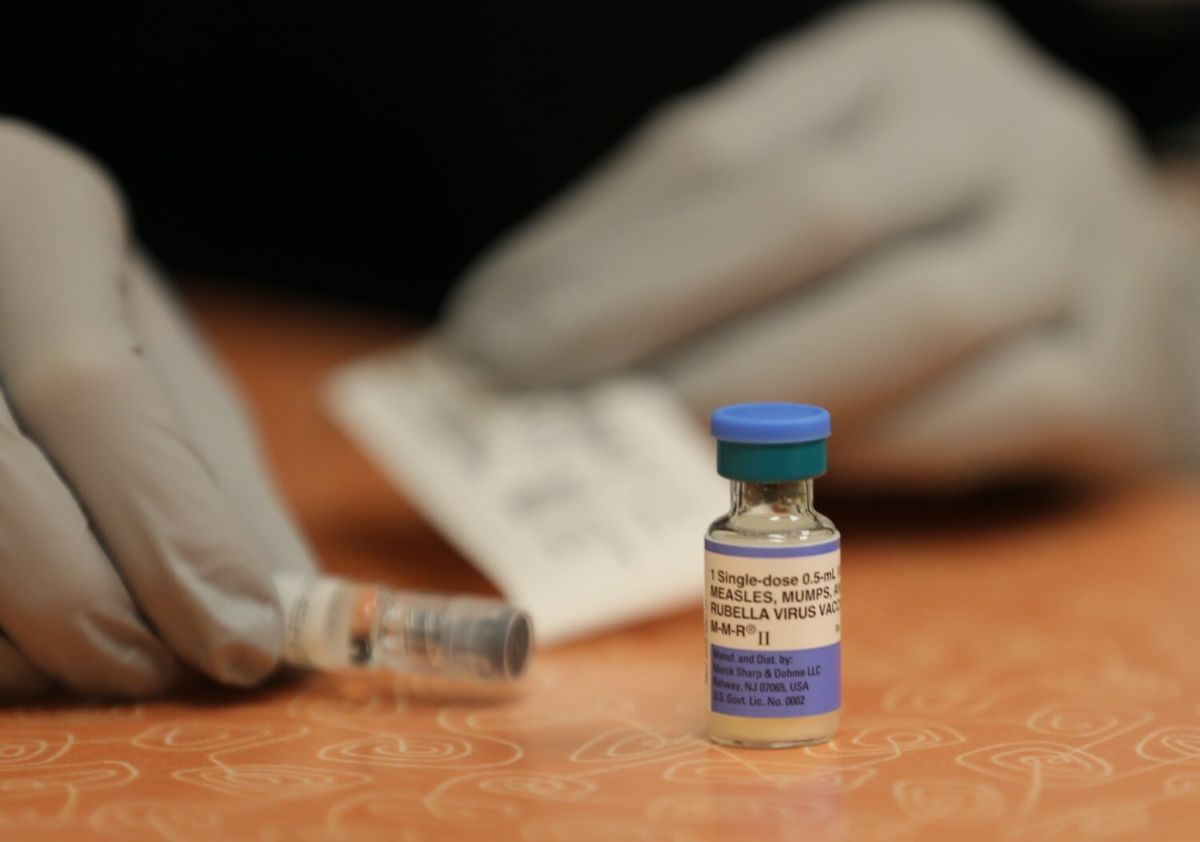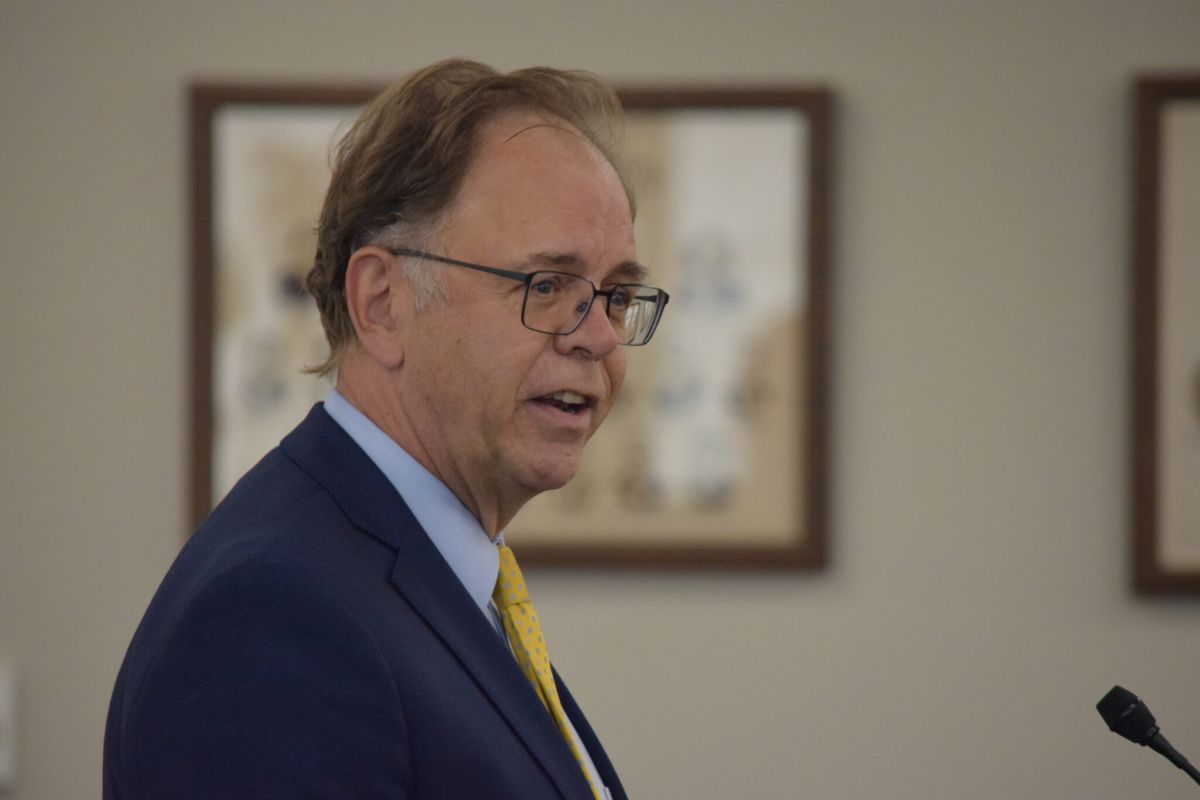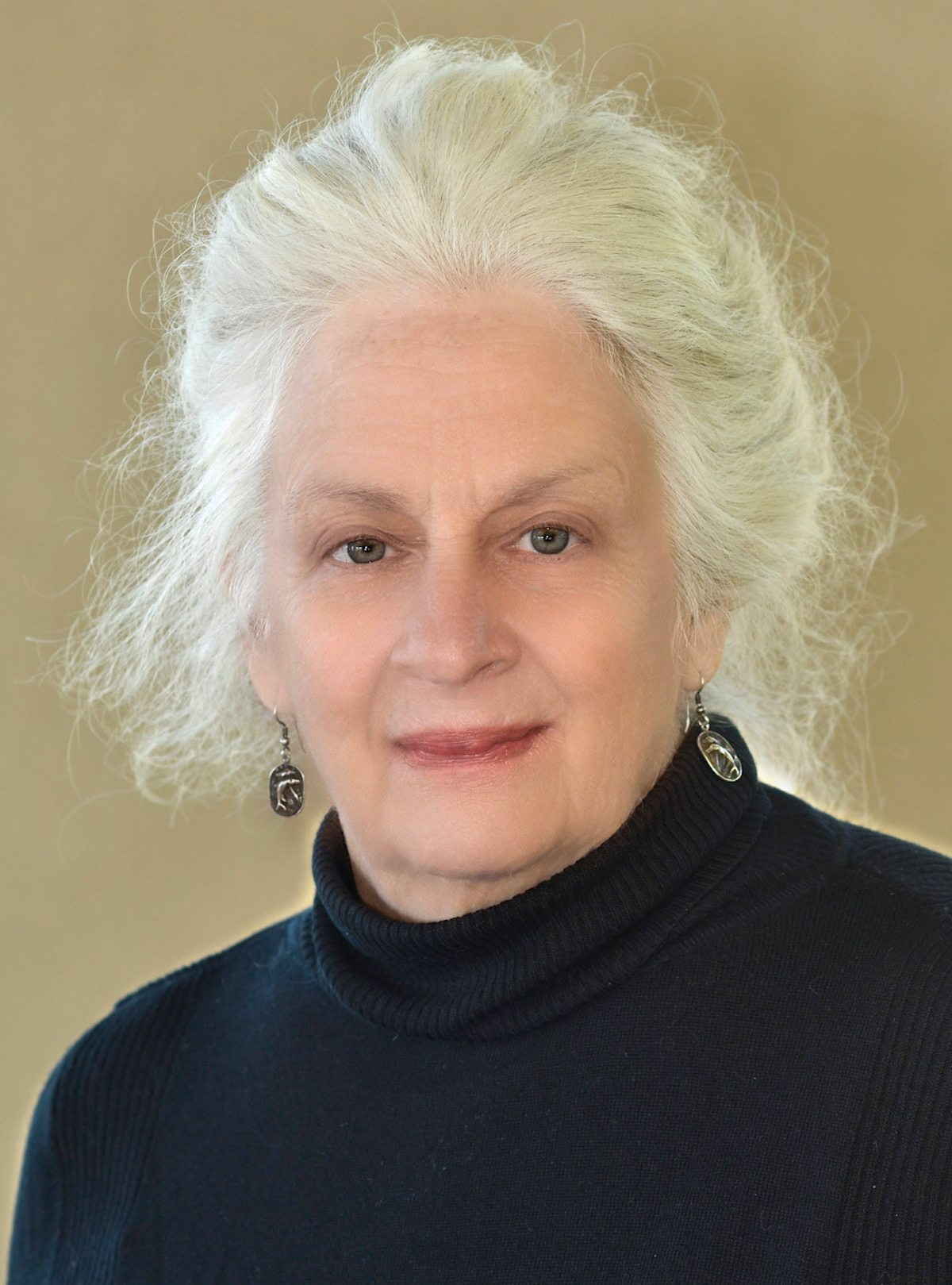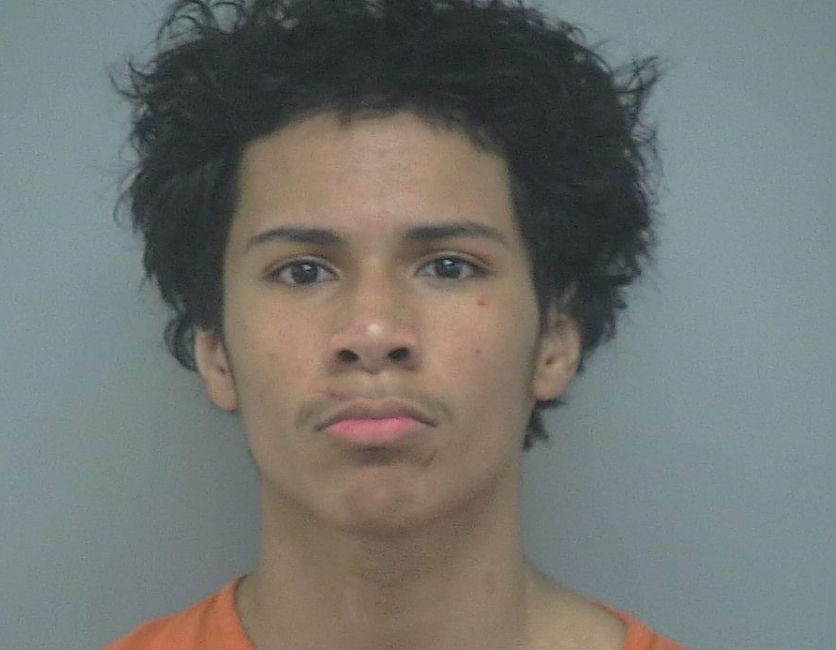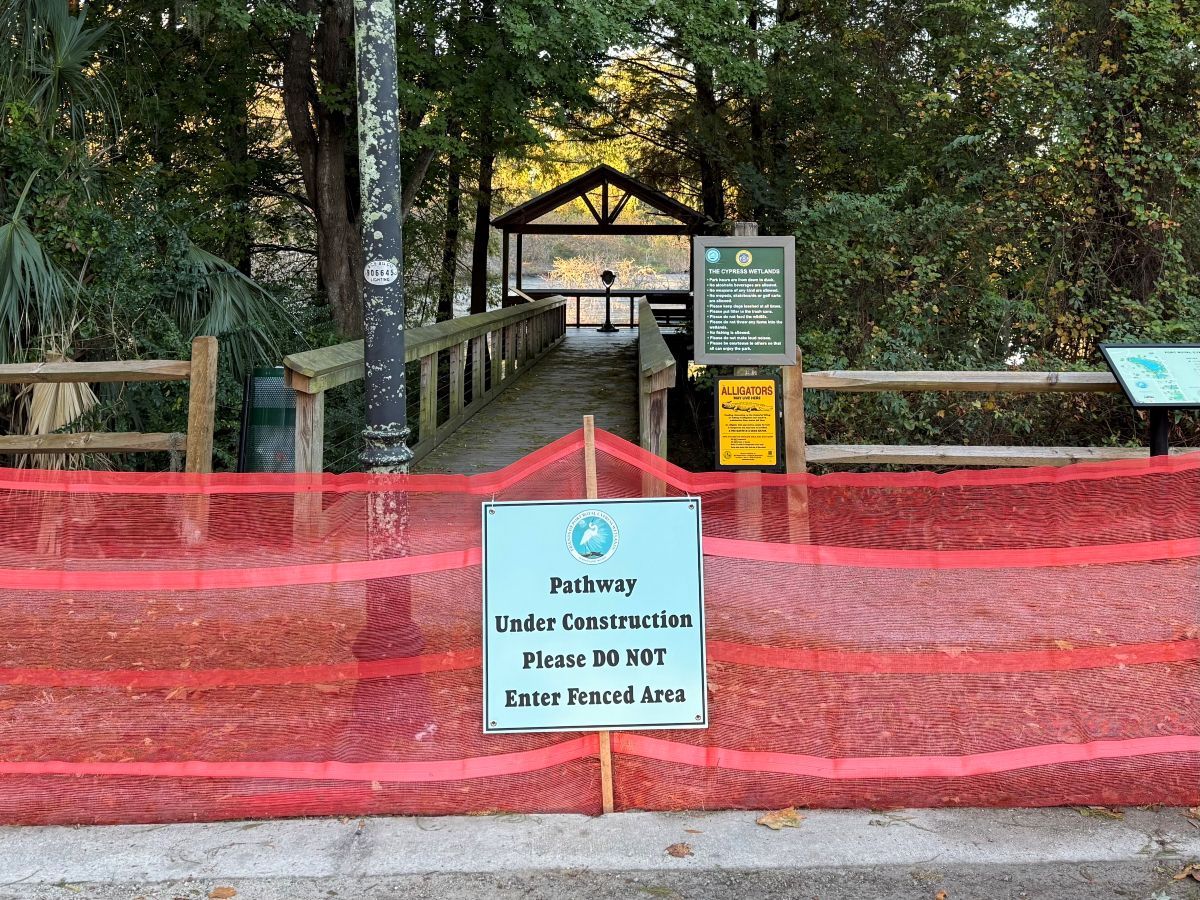Stephen Stanko convicted of killing girlfriend, friend over two-day period in 2005
By Skylar Laird
SCDailyGazette.com
COLUMBIA — Inmate Stephen Stanko, who was sentenced to death twice in separate cases, was executed Friday, June 13, 2025, by lethal injection.
The 57-year-old was declared dead at 6:34 p.m., 27 minutes after the execution began. He was the sixth inmate put to death since the state resumed executions in September.
The U.S. Supreme Court declined to intervene in a Friday afternoon order. Gov. Henry McMaster denied Stanko’s request for clemency Friday evening, as the Republican chief executive has for every inmate sent to the death chamber in the past nine months.
The curtain opened on the death chamber right at 6 p.m., the three media witnesses present said.
Stanko, strapped to a gurney with his arms out to either side and a blanket pulled over his chest, looked at everyone in the witness room. Along with the three reporters sat two members of victim Henry Turner’s family, one of victim Laura Ling’s family, a member of Stanko’s family, the solicitor from the office that prosecuted the case and one of Stanko’s attorneys.
Stanko’s attorney, Lindsey Vann, read his final statement, in which he apologized to the families of his victims and said his crime did not represent the sum of his life but the worst day of it.
“I have been a death row inmate for over 20 years now, and in that period of time, I have been the product of the worst day of my life,” Stanko wrote in his statement. “That is what happens. We live every day with the knowledge and understanding and responsibility of what happened.”
“For my victims and their families and for my own family, I have done everything possible to honor them over this time,” the statement continued.
Shortly before 6:07 p.m., a woman’s voice announced that the first dose of pentobarbital, a deadly sedative used for executions in the state, could begin.
Stanko mouthed something inaudible to Vann, who blew him a kiss. Looking at the victims’ family members, his mouth again moved inaudibly, witnesses said.
For about a minute, Stanko breathed deeply, his lips puffing out. The color drained from his face and hands. All movement seemed to stop at 6:07 p.m., witnesses said.
At 6:20 p.m., the woman’s voice announced a second dose of pentobarbital could begin. This announcement was not included in previous executions but was added for transparency after prison officials confirmed in federal court this week that the state’s lethal injection protocol involves two fatal doses of the drug, said spokeswoman Chrysti Shain.
A doctor entered the room at 6:33 p.m. and declared Stanko dead a minute later.
Stanko’s last meal, eaten Wednesday, was fried fish, fried shrimp, crab cakes, a baked potato, carrots, fried okra, cherry pie, banana pudding and sweet tea, Shain said.
Appeals
After Stanko’s attorneys unsuccessfully petitioned the state Supreme Court for more information about the state Department of Corrections’ execution protocols, Stanko chose to die by lethal injection.
His decision was to avoid the electric chair, which legislators made the default in 2021, and not because his concerns about other methods were assuaged, he wrote in a statement attached to the decision.
Stanko’s attorneys filed a separate appeal, this one in federal court, raising concerns about all three of the state’s allowed methods of execution: lethal injection, electrocution and firing squad.
The firing squad, in particular, has been under scrutiny by the state’s death row lawyers and some legislators after an autopsy of the last inmate executed in the state, Mikal Mahdi, showed two bullet holes instead of the expected three. The bullets also appeared not to have hit Mahdi squarely in the heart, as they had for a previous inmate, according to the autopsy report.
The marksmen, shooting at a target 15 feet away, might have intentionally missed the target to cause more suffering for Mahdi, who was put to death for killing a police officer, the attorneys claimed in their filing.
The state corrections department argued two bullets struck Mahdi in the same spot and followed the same path through his body. The bullets did hit his heart, the marksmen didn’t miss, and the target was properly placed, the state has said in legal filings.
Next, Stanko’s attorneys argued the state’s use of two “massive” doses of the sedative pentobarbital in at least two of the three previous lethal injection executions also suggests something went wrong. One inmate, Freddie Owens, declined an autopsy for religious reasons.
Attorneys for the state have said this is the state’s protocol and nothing has gone amiss in any executions carried out since September.
A federal judge declined to intervene. U.S. District Judge Richard Gergel wrote in an order Wednesday he would not rule on firing squad arguments since that was not Stanko’s selected method. Furthermore, he saw no cause for intervention based on the previous lethal injection executions, he wrote.
The crime
Stanko’s crime spree began April 7, 2005, at the Murrell’s Inlet home he shared with his girlfriend, librarian Laura Ling.
Ling’s 15-year-old daughter woke at about 1 a.m. to find Stanko standing over her in her bedroom. She ran to her mother’s bedroom, where she found Ling incapacitated and bleeding on the floor beside the bed, according to court records.
Stanko tied up, beat and raped Ling’s daughter, then choked Ling to death. He slit the daughter’s throat and left her for dead before packing a suitcase, stealing Ling’s credit card and jewelry, and fleeing in Ling’s car, according to court records.
Around 4 a.m., Stanko called a friend, Henry Turner. Stanko lied saying his father had died and asked Turner if he could spend the night.
Turner agreed and called his partner, who lived in Charlotte, to tell her. He ended the call in his usual style, saying, “I love you, brown eyes,” Cecelia Kotsipias later testified in court.
The next morning, after getting the two of them breakfast, Turner went to shave his face in the mirror. Using a pillow as a silencer, Stanko came up behind Turner and shot him in the back, according to court documents.
Stanko then struck Turner and fatally shot him in the chest.
Stanko took Turner’s truck, stole money from his bank account and drove to Columbia. There, he spent an evening posing as a businessman and buying people drinks at bars before taking off for Georgia.
In Augusta, Stanko told a woman he met that he was in town for The Masters golf tournament. A charming man, as people who knew him later testified, he convinced her to let him stay at her house.
Stanko stayed there until April 12, before leaving abruptly in the middle of the night. After his departure, the woman recognized Stanko’s photograph in the newspaper alongside a headline about Turner’s death. She called the police, who apprehended Stanko before he left the city, according to court records.
Back home, Stanko had a reputation as a scam artist. Over the years, he was charged and convicted more than a dozen times for stealing money, computers and cars from employers and falsely posing as a lawyer.
Stanko also had served a prison sentence for kidnapping his then-girlfriend with the intent to kill her. While serving that sentence, he helped write the book “Living in Prison: A History of the Correctional System with an Insider’s View,” alongside researchers Wayne Gillespie and Gordon A. Crews.
Stanko was released from prison for that crime about a year before committing those that would land him on death row.
Stanko never claimed innocence, instead arguing he had brain damage that caused him to commit the killings. Two separate juries, in 2006 and 2009, convicted Stanko of murdering Ling and Turner. The juries recommended death sentences for each of the crimes.
It’s Turner’s killing for which Stanko was executed Friday. His appeals in the other case were ongoing.
Stephen Stanko
Growing up, Stanko was smart and well-liked. Although his father could be harsh and his parents weren’t particularly involved in his life, Stanko was outgoing and cheerful at school, teachers and neighbors recalled during his trials.
He was a member of the honor society, Beta Club, and junior engineering club, as well as an escort at school pageants and vice president of the school’s Spanish club. He placed in a regional competition for the Olympics of the Mind, in which students would participate in academic challenges, former teachers said.
“He was, I think, a role model to the other students,” one of his middle school teachers, Barbara Poland, testified. “I think the other students really did look up to him.”
As an adult, Stanko remained intelligent and charming, his former girlfriend, Elizabeth Buckner, testified. But she saw a darker side to him, too, in the four years they were together, she said.
Stanko lied to Buckner repeatedly about work, telling her he’d been promoted when really he’d been fired or saying he was starting a side business selling cars without telling her the cars were stolen.
Stanko had an “inability to speak the truth about anything,” Buckner testified.
“He ran into trouble in every position that he held,” she said.
When Buckner confronted Stanko, he tried to knock her out using a combination of chemicals. When that didn’t work, he tied her up. He pleaded guilty to kidnapping and assault and battery with the intent to kill, according to court documents.
Henry Turner
Turner was a jester, both literally and figuratively.
He was a member of the Royal Order of Jesters, an invite-only faction of Shriners for which Turner would don clown makeup and the distinctive fez to ride tiny cars in parades. He was always making jokes and acting eccentric, friends and family testified during Stanko’s 2009 trial.
Turner, who served as a master sergeant in the Air Force, loved to wear a pair of red, white and blue joggers wherever he went, said his partner Kotsipias. At first, she asked him to wear something else, but eventually, the pants grew on her.
“Everywhere we’d go, he got attention by these pants, and I grew to love them, too,” she said.
Turner loved fishing, and he passed down the passion to his three children and six grandchildren, his children testified. When his daughter, Debbie Gallogly, needed a break from the chaos of two younger brothers, her dad would take her out on the lake.
“We don’t have his laughter, or his humor, or his intelligence, or his compassion,” Gallogly testified. “All of that is erased when you lose a family member, and to lose someone the way that he died — it hurts my heart so bad to know the circumstances surrounding my father’s death.”
At the time of his death, Turner had been working for Stanko to make extra money so he could take Kotsipias on a cruise, she said.
“We had a wonderful life together, and Stephen Stanko has ruined our lives,” Kotsipias said. “He has ruined it entirely, because Henry would have been living today. We would have been fishing, we would have been singing, we would have been having a wonderful time together.”
Laura Ling
Christina Ling remembered her mother as a hard worker. After divorcing Christina Ling’s father, Laura Ling worked a job at a library, raised her three children and earned a master’s degree in library science all at once, Christina Ling testified in 2006.
“It was tough, but she did it, and she was so successful,” Christina Ling said.
Laura Ling also helped at her friend Rebecca Cahly’s greenhouse, often working harder than even Cahly herself for little or no pay. Really, Ling would ride her children’s bikes to help because she liked the time she could spent chatting with Cahly, the friend testified.
A talented seamstress, Ling handmade Halloween costumes and Christmas stockings so elaborate that Cahly, a seamstress herself, said Ling must have put more than 100 hours of work into them.
“I wish that I would have asked her to teach me how to sew and stuff before she passed away, because I’m not very good at it,” Christina Ling testified.
Laura Ling loved playing tennis and watching movies with her children. When Cahly went through a difficult pregnancy, Ling made a habit of calling her up and, instead of saying hello, yelling into the receiver, “I love you.” If Christina was around, she’d join in, Cahly testified.
A couple years before Laura Ling was killed, she and her daughter went through a rough patch, spurred in part by Ling’s preoccupation with her other children, her job and her degree. Hoping to work it out, Christina Ling wrote her mother a letter that she later found buried in the bottom of her mother’s purse.
“You have been my mom and on some occasions even my dad, my tennis mate, my friend, my mentor through the good and the bad,” Ling wrote in the letter, which she read in court. “To be honest, I’m sure we have got a lot of bad ahead of us, but just know that I’m going to be sticking it out there with you and that I love you very much.”
Skylar Laird covers the South Carolina Legislature and criminal justice issues. Originally from Missouri, she previously worked for The Post and Courier’s Columbia bureau. S.C Daily Gazette is part of States Newsroom, the nation’s largest state-focused nonprofit news organization.
Stephen Stanko’s last statement
What must be said first and foremost is to Christina and the rest of Laura’s family and all of Henry’s family. I am truly sorry for the pain and loss that I caused in this horrible situation. Sorry is NEVER enough but that does not mean it should not be said. Not a single day — NOT ONE SINGLE DAY — has gone by that Christina, Laura and Henry have not been in my thoughts and prayers.
If my execution helps with closure and/or the grieving process, may they all move forward with that being completed.
I have been a death row inmate for over 20 years now, and in that period of time, I have been the product of the worst day of my life. That is what happens. We live every day with the knowledge and understanding and responsibility of what happened. For my victims and their families and for my own family, I have done everything possible to honor them over this time. I am sorry to my family for all the pain that I have caused them.
What I hope and pray that is known and understood about me — and every death row inmate and inmate in the world is that we are not the sum of one moment in time.
In my youth, I was an honor student and athlete. I was a member of clubs like the Honor Society and Beta Club, the Junior Engineering Technical Society and Mu Alpha Theta math team, the president of sum including the Spanish Club. I do NOT say this to brag. I say it because I was not what people see me as now — in this moment.
In my early adulthood, I volunteered at the orphanage, I saved a drowning child in Augusta, I coached youth baseball. I was not what people see me as now — in this moment.
On death row, I have tutored inmates, some are now in general population. Some will possibly be released. I have written books. I have lectured to college students via telephone across the United States. My years have shown me the good that exists in others.
NONE of this is meant to brag. It is only meant to show that I am NOT ONLY what people see me as now — in this moment.
In my life as a free person, I was raised Catholic, spent years in catechism and Sunday school, and learned the Bible from cover to cover, chapter and verse. I have always believed in God.
In prison — on death row — I saw faith in volunteers who came in and showed us God’s love. I experienced faith in looking at myself with my past and present and later in eternity. In here, I have seen, felt, and now have a relationship with God. I am not what people see me as now — in this moment.
We execute people in this country for moments in their life. For over 20 years, people have only seen these moments and judge us for those alone. I have lived approximately twenty thousand nine hundred and seventy-three days (20,793) but I am judged solely for one (1).
I am NOT trying to lessen what has happened. There is no way for me to EVER make up for what happened. This has been my life for over 20 years.
If I spent another 20,793 days apologizing, it would not be enough for that day, but that was NOT my only day.
If my death helps anyone, that is one thing, but once I am gone, I hope that Christina, Laura’s family and Henry’s family can all forgive me. The execution may help them. Forgiveness will heal them.
To Lindsey and the Joes, to Charles and Emily, to Jill and Cierra and Rosalind, Ali, Briana AND EVERYBODY who fought, I could not have been able to have ever known better people. You became family.
Jeff. I love you. No man or woman has had a better brother.
Charles. The same. No man or woman could have found a better brother.
Source: South Carolina Department of Corrections


